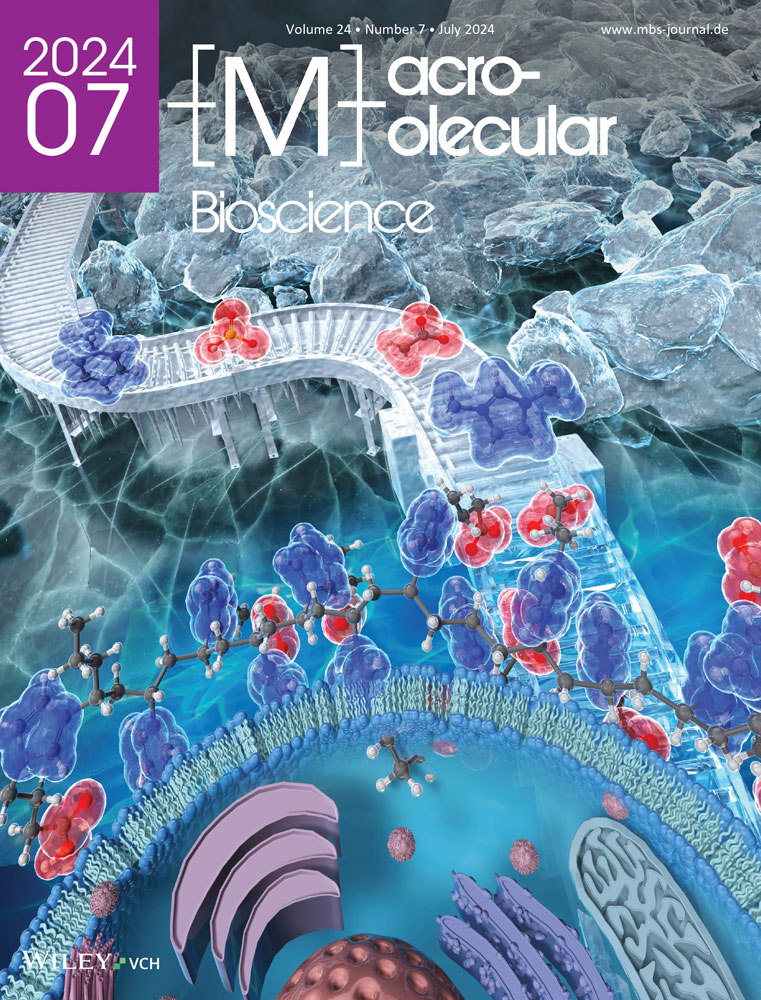Near-Infrared Triggered Biodegradable Microneedle Patch for Controlled Macromolecule Drug Release
Abstract
Transdermal drug delivery of macromolecule drugs attracts significant attention due to the advantage of convenience and biocompatibility. However, the practical usage of it is limited by the low delivery efficiency and poor drug absorption. To develop an efficient, safe, and controllable transdermal delivery method, the near-infrared (NIR) triggered calcium sulfate and gelatin biodegradable composite microneedle (MN) patches are developed. The MN patches are fabricated by polydimethylsiloxane (PDMS) molds, and the structure data can be adjusted by changing the molds. Such an MN patch can release both macro and micro molecule drugs. After loading with photothermal converter IR780, which can transfer energy of light to heat, the release of macromolecule drugs in MNs can be controlled by applying NIR irradiation. The control effect can be enhanced by spraying 1-tetradecanol (TD) coating and optimizing the ratio (weight) of gelatin and calcium sulfate to 2:6. Besides, the MN patch can deliver drugs through the skin barrier, and the process can be controlled by NIR. Moreover, the insulin-loaded MN patch exhibits some therapeutic effects on healthy mice. This work suggests that biodegradable MNs can achieve controllable drug delivery and potentially be applied in individual treatment via transdermal ingestion.
Conflict of Interest
The authors declare no conflict of interest.
Open Research
Data Availability Statement
The data that support the findings of this study are available in the Supporting Information of this article.




